Types of monstera and their features
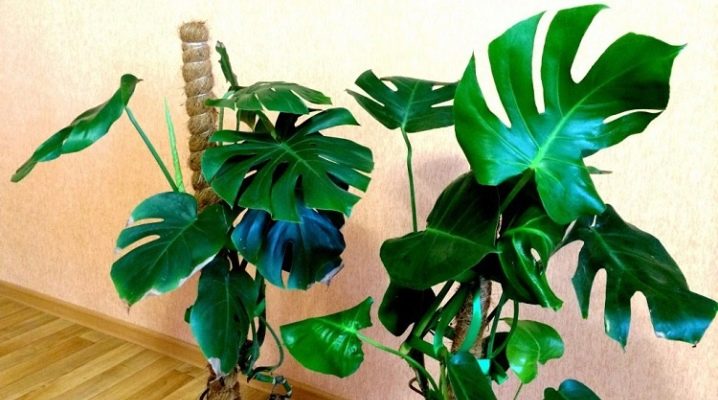
Many legends and myths are associated with the monster. Some associate it with a monster and are afraid to grow it in living quarters, and some believe that the flower got its name from the word "miracle". In any case, this is a very effective ornamental plant that harmoniously fits into any interior, bringing notes of freshness, luxury and style to it.

Discovery history
As you know, Europeans discovered America at the end of the 15th century, then for everyone it was known as a mysterious land with dense impassable wilds full of secrets and mysteries. For many centuries in the countries of the Old World, there were legends about terrible and giant trees-monsters growing in the forests of South America. Wanderers said that after the attack of such monsters, only one skeleton remained from a person, literally pierced through by numerous processes hanging from the long trunk of this tree.
Of course, these are just fairy tales, and the colors here are pretty exaggerated - but there were indeed grounds for such legends. Scientists believe that in this case it was about a wild monster, and the monstrous tentacles are nothing more than its aerial roots. Hanging, they may well sprout through the skeletons of travelers lost in the tropical forest, and the rich imagination of eyewitnesses has already painted the most terrible pictures of the death of the unfortunate. It was these myths-legends that became the reason why the plant got its name, because in translation from the Latin monstrum it is a monster.
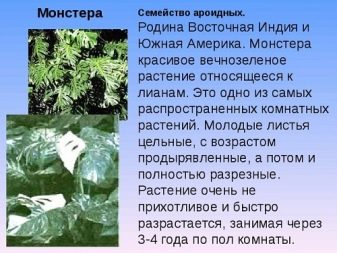
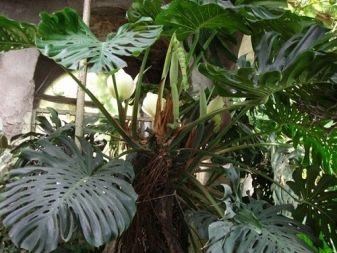
However, this is far from the only version of the origin of the name of the flower. Many tend to believe that it comes from monstrosus - amazing, bizarre. Agree, the second version is much more pleasant and optimistic.
In the first time after the discovery, scientists attributed the monster to the philodendrons, but at the end of the 18th century, it was identified as a separate genus. By the way, it was then that the first specimens intended for growing at home were brought to London.
Since that moment, monstera has become very popular as an ornamental indoor plant in European countries. A little later, due to colonial aspirations, it came to East India and from there it spread to Asian countries. Today it is one of the most demanded flowers for decorating residential and office premises all over the world. The genus of monstera today has about 50 different plant species. Let's dwell on them in more detail.
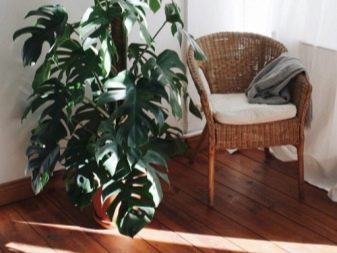
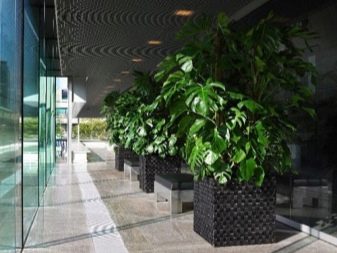
Characteristic
Monstera is a tall tropical liana, in natural habitat it grows up to 15-20 m, grabbing large stones and tree branches with its aerial roots. Leaves are asymmetric, ovate, slightly elongated. The plates are rather large and reprofiled; they are held on the stem thanks to the elongated cuttings. Young leaves are usually whole, but growing up to 10-12 cm, they become perforated, and then with age and dissected.
The flowers are bisexual. They have a white or pale cream shade, but the core is yellowish-green, the shape of the flower is elongated, cylindrical, and is produced in nodes. At the same time, it cannot be said that any monsters always look stylish and effective - the appearance depends a lot on the characteristics of the variety.

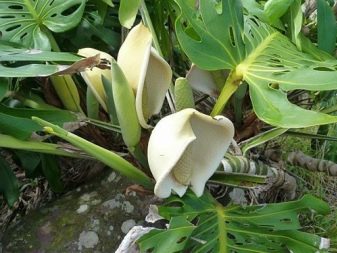
Varieties
Consider the most common varieties and types of monstera

Monstera Adansona
The plant is tall, reaching 8 meters.The leaves are rather thin, pierced with multiple holes along the entire surface of the leaf plate. The size of the leaf varies from 25 to 55 cm, and the width is usually 15-30 cm, the shape is ovoid.
In indoor conditions, it blooms infrequently, while the size of the peduncle very rarely exceeds 30 cm, and the diameter is not more than 2 cm. The flower is white-yellow. The plant comes from Mexico.
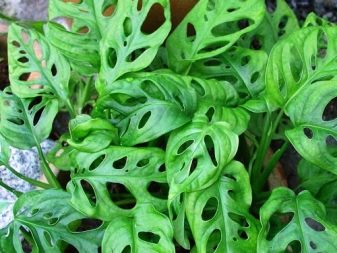
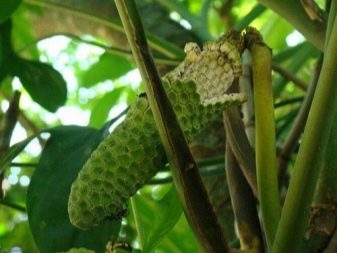
Monstera Borziga
This variety was bred in the laboratory by artificial means, therefore it is impossible to find it in nature. Leaves are cordate, medium-sized, with several identical cuts. The diameter of each plate is about 30 cm, they all hold quite tightly on thin stems. Does not bloom.
Keep in mind that this houseplant is extremely poisonous - its juice contains caustic substances that cause severe irritation of the skin and mucous membranes.
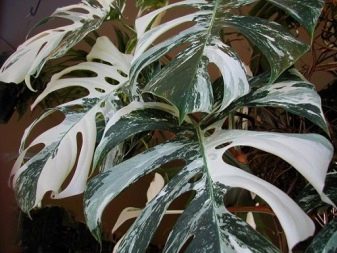
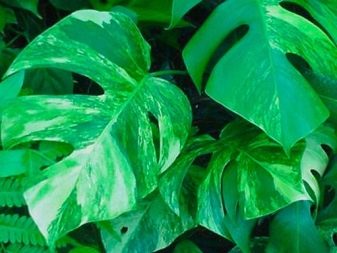
Monstera punched
As the name implies, this variety is distinguished by leaky leaves. The homeland is the hot and humid tropics of the American continent. The shape of the leaf plates is slightly elongated, ovoid, the length of each can reach 80 cm, and the width does not exceed 25-30 cm. The edge is uneven, the holes are located asymmetrically, the lower side is noticeably widened.
Blooming at home is infrequent, the height of the bud is 15-20 cm, while the size of the core is about 10 cm.


Monstera delicious
This monstera is better known as "attractive", it also comes from tropical parts of South as well as Central America. The leaves of this vine are very large, often reaching 55-60 cm in diameter. Young leaves, as a rule, are heart-shaped, the edge is whole.
It blooms every year under suitable conditions. The bud is white, the ear itself is quite high - about 25 cm, while the thickness of each varies from 10 to 20 cm. Unlike other varieties of monstera, this variety can bear fruit. The fruit is an edible soft berry with a rather peculiar smell and taste - they resemble anchovy. It usually takes about 10 months for the fruit to fully ripen.
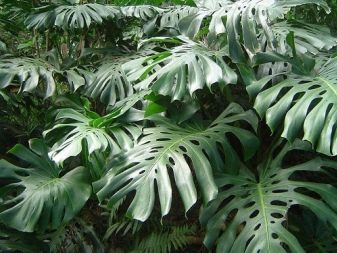
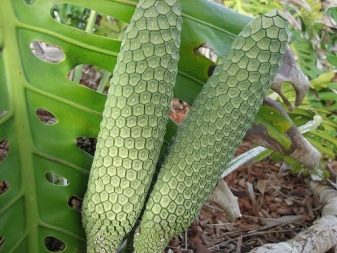
Monstera oblique
Unequal, or as it is also called oblique, monstera comes from the forests of Brazil and Guiana. In the natural environment, it is a climbing liana, because the leaf plates are solid, elliptical, each about 20 cm long and 6 cm wide. The edges are uneven, the holes in the leaf plates are not round, but slightly elongated. The petiole is about 20-25 cm. Visually, the leaves look a little wrinkled.
With proper care, it can bloom from time to time, a light-colored bud with a height of about 7-8 cm, a core about 4 cm.

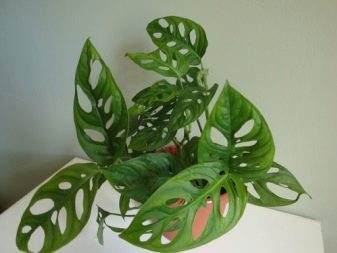
Monstera Karvinsky
In an artificial environment, this monstera grows up to 3 m long. Young leaves are usually whole, but as the plant matures, cuts and large holes form. The diameter of the leaf plate is average - up to 40 cm.
In its natural habitat, the plant is found in Mexico, it is usually used to decorate restaurants, as well as the halls of large companies and cinemas.

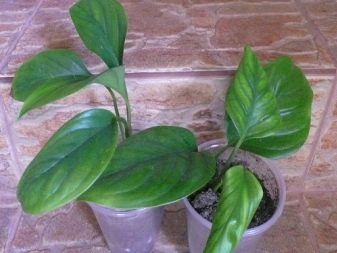
Monstera Friedrichstahl
At home, only owners of large cottages and mansions can keep a monster like this. City apartments are not suitable for such green pets, since this flower is quite tall. The leaves are really huge, the minimum diameter is 35-40 cm, it contains pronounced cuts.
The plant blooms with large and beautiful white flowers.
Important: when growing such a variety of monstera, you should not cut off its aerial roots, since through them the flower receives the minerals necessary for full growth and development.
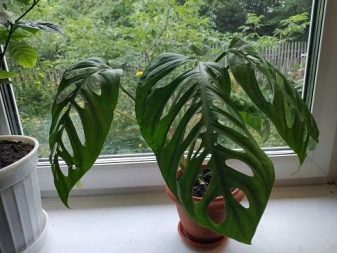

Monstera pointed
This variety got its name for a reason - the leaf plate of this monster has the shape of an elongated heart, the edges are uneven, combed. The length of the leaf of an adult plant reaches 50 cm, and the width is 20 cm.The color of the leaf plates is rich, green, they are kept on the stems with the help of cuttings, their length is usually about 40 cm.
At home, it reaches 3 m, blooms only in natural habitat conditions.
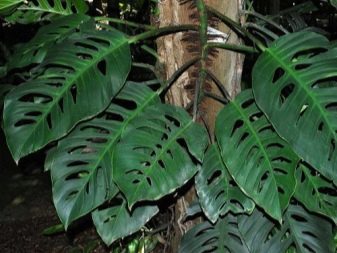
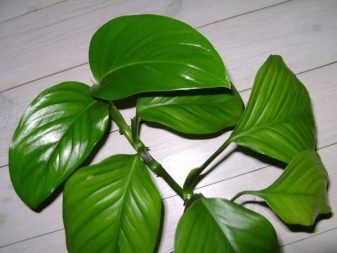
Monstera variegated
The second name for such a monstera is marble. Its characteristic feature is solid leaves of a rich green color, covered with white or light beige stains. That is why the plant is visually similar to marble. New leaves are whole, as they develop, they become large, over time, cuts are formed, which, as the flower grows, transform into holes.
Among the owners of office premises, such varieties as Monstera Deliciosa, Alba, Variegated, Monstera Dubia, Silver Leaf, and also a dwarf mini-monstera are popular.

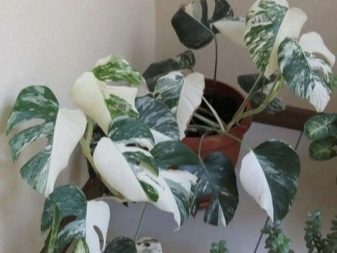
Care
Monstera is a very unpretentious houseplant, but at the same time, regardless of the variety, there are certain subtleties of its cultivation.
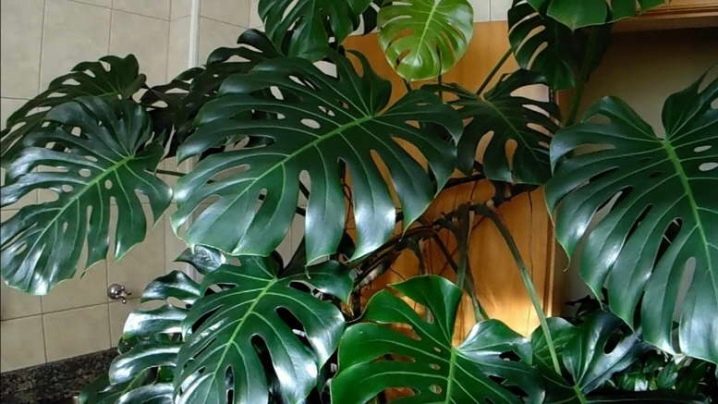
Light
It is advisable to keep a young plant in sunny, bright rooms, always protecting it from direct sunlight. In the process, they become calmer and can freely tolerate a small partial shade, so the flower can be placed even in the back of the room.
In winter, the flower needs additional lighting, otherwise the growth of the leaves slows down and the trunk twists.
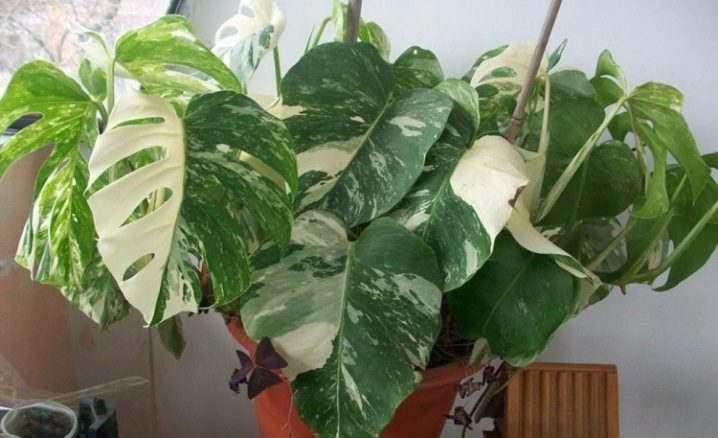
Temperature
For the full development of a room monstera, a temperature of 18 to 23 degrees Celsius is needed, and in winter, try to prevent the temperature from dropping below +15 degrees.
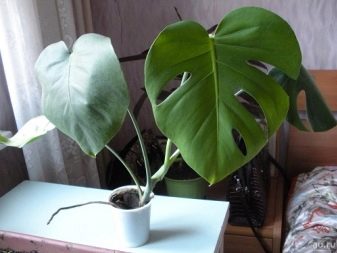
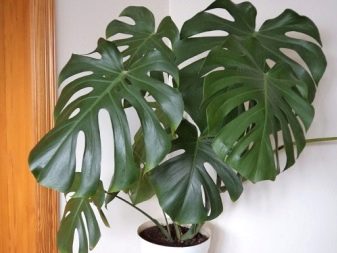
Watering
In the hot season, the monster needs frequent and abundant watering, although moisture stagnation should not be allowed. In the period from November to February, watering is greatly reduced. From time to time it is recommended to arrange a warm shower for the air roots, or place them in a vessel with water.
The plant loves high air humidity, so its green parts should be sprayed with soft water 1-2 times a day and wiped from time to time.
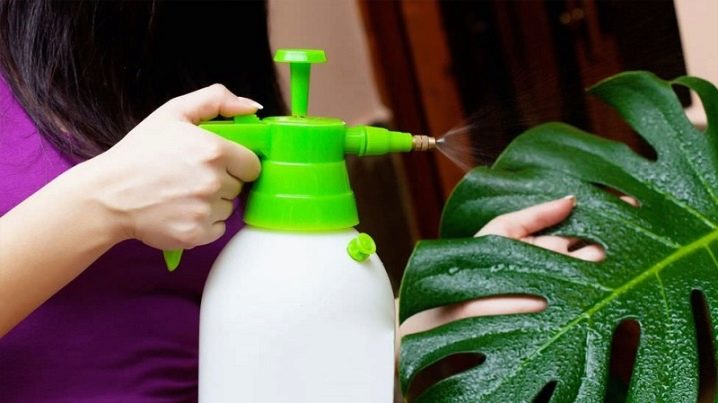
Transplant
A young monster needs to be planted in a new land every spring. Adult - requires soil renewal less often, it is enough to replace the substrate once every 3-4 years, although it is advisable to regularly renew the top layer of the soil. The air roots remain uncut during transplantation.
When replanting an adult plant, you should choose a fairly spacious container for it. But in the case of young ones, this is unacceptable - if the monstera is small, then by transplanting it into a too large container, you can simply destroy the green pet - the soil quickly becomes waterlogged, and the root system begins to rot.
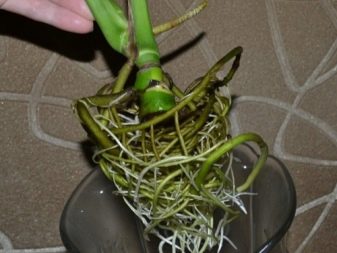
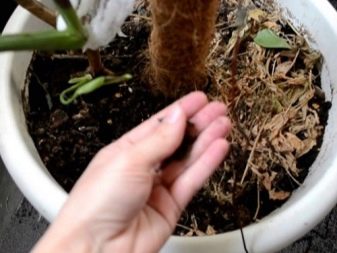
Reproduction
Monstera, regardless of the variety, propagates by stem or apical cuttings, as well as by air layers. For scientific purposes, they resort to seed propagation.

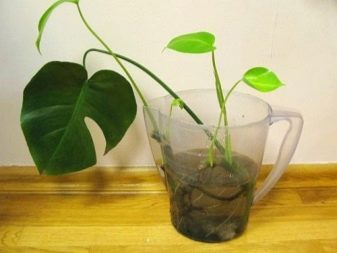
For information on how to care for a monster, see the video below.




























The comment was sent successfully.